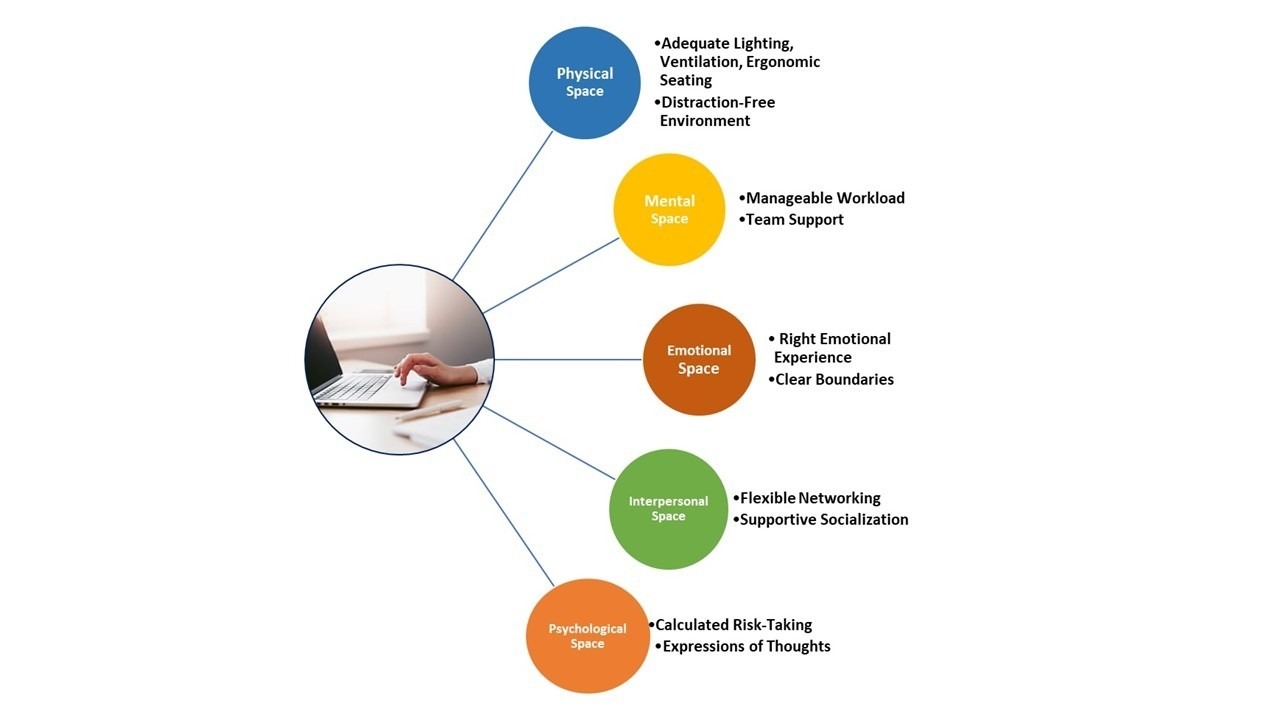There are no items in your cart
Add More
Add More
| Item Details | Price | ||
|---|---|---|---|

Imagine this scenario. You are sitting in a noisy office space with poor lighting, working on your laptop. There are no windows, and the AC stopped working that morning. Your mobile pops up an Instagram notification that reads someone had liked your post. While staring at your phone, you hear your manager raise their voice on your team member for not being result-oriented in their endeavors.
Well, this is a typical example of a negative work environment. Then, what constitutes a positive work space?
According to an article published in indeed.com, a positive work environment is a workplace that promotes employee safety, growth and goal attainment. When I researched further, I found that several other elements such as trust, cooperation, risk-taking support, accountability, and equity are essential to build a positive work environment.
In my view, a positive work environment constitutes five distinct individual spaces - physical, mental, emotional, interpersonal, and psychological space. Let’s look at them from the perspective of the employee as well as the organization.
Physical Space:
Regardless of how congenial a work environment is, it must firstly be comfortable, encouraging employees to spend significant work hours at their desk. Sufficient lighting and ventilation are imperative for a positive workplace. While working, employees could choose a quiet workspace that keeps external distractions at bay to promote clearer thinking and focused working. Organizations can offer ergonomic workstations with flexible seating arrangements for employees to choose where to sit /stand and work from. Such variety would help in overcoming monotony and serve as a great value addition.
Mental Space:
Struggling to focus on a single activity as you are overwhelmed with multiple items on your never-ending to-do list? There are high chances that you keep thinking of doing several work items but forget them eventually. It’s time to declutter your mental space. Start by writing down your tasks, prioritizing them, and blocking specific time slots on your calendar for each responsibility. Balance structure and spontaneity by leaving room for ad hoc obligations and sudden developments. Do not hesitate to seek help from your manager or team members when needed. Whether or not you receive assistance, there is nothing to lose by asking. To help workers achieve positive mental space, organizations should be mindful of every employee’s workload and assign responsibilities consciously. A positive mental space to work is pivotal for securing long-term professional commitment from employees.
Emotional Space:
While mental space focuses on clarity of work-related thoughts and execution, emotional space is all about experiencing the right emotions while working. Do you remember that annoying boss or team member who pinged you multiple times for a not-so-important update late at night or while on sick leave? Such situations can drive you to seek opportunities out of the organization. To avoid this, it is important to set boundaries and expectations right at the beginning. Companies should also stop glorifying overworking, as it only encourages inefficiency and employee burnout.
Interpersonal Space:
Opportunities to physically connect with team members at workplace has its pros and cons. Networking with colleagues improves interpersonal bonding and knowledge sharing. Honestly, serendipitous water cooler conversations have no virtual substitute. At the same time, the pandemic has shown us that productivity does not necessarily get impacted by a lack of in-person connections. In fact, remote work had led to improved efficiency and better work-life integration.
To create a positive interpersonal workspace, it is important to know your social style. If you draw energy from human interactions, consider working from office and engaging with work buddies frequently. Conversely, if social interactions drain you, limit your conversations to professional matters. There is no one-size-fits-all solution; set your own positive interpersonal space based on your preference and needs. Respecting different social styles, companies should let employees choose the frequency and modes of interaction at offices. As long as individuals’ interpersonal space supports them to give their best output, they must be allowed by organizations to socialize at their will.
Psychological Space:
A positive organizational work environment is one where trust, support, and encouragement are experienced by an employee. Employers should provide their workforce with the space to take calculated risks and learn from outcomes. This would encourage them to make meaningful contributions. Similarly, employees should assertively voice concerns and opinions to leaders to co-create psychologically safe workspaces.If your feedback continuously falls on deaf ears, it is a clear indication you might not belong there. Companies should note that when employees feel heard and valued, they are naturally willing to go the extra mile and take accountability for their actions, which in turn will help the team achieve phenomenal results.
Creating a positive work environment is a collaborative effort between employees and the organization. It is the collective responsibility of every individual to build a positive work environment, not only for themselves to strive and succeed but also for their stakeholders to thrive in a supportive workspace.
Start assessing your work environment and make necessary changes to your physical, mental, emotional, interpersonal, and psychological workspace that inspires you to be your best version possible, every day.
Happy working!

Vaishnavi Prasad J R
Leadership & Professional Development Facilitator | Soft Skills Trainer | Learning & Development Professional | Empowering Individuals to Realize Their Full Potential